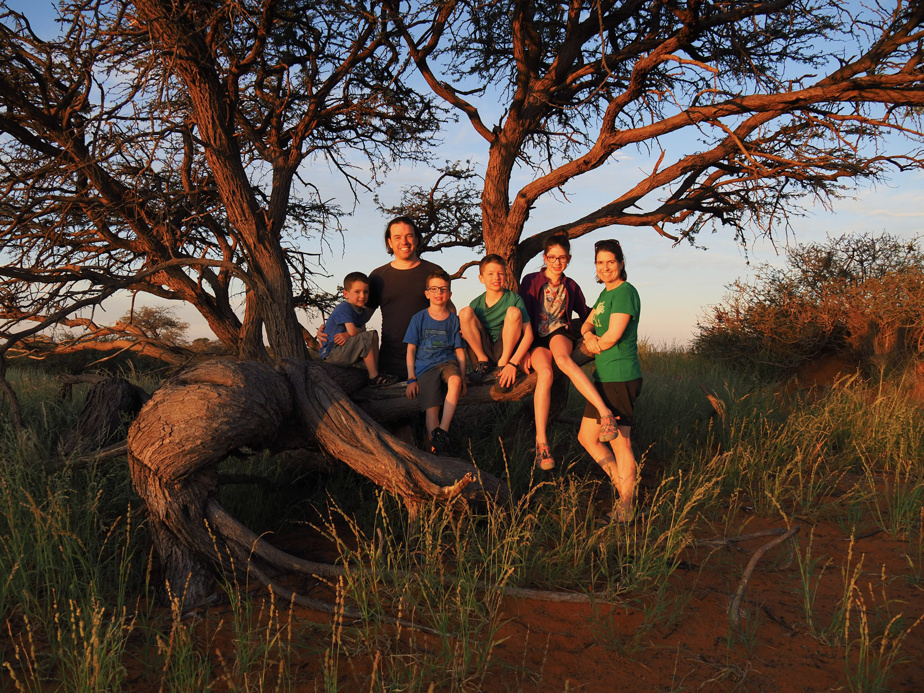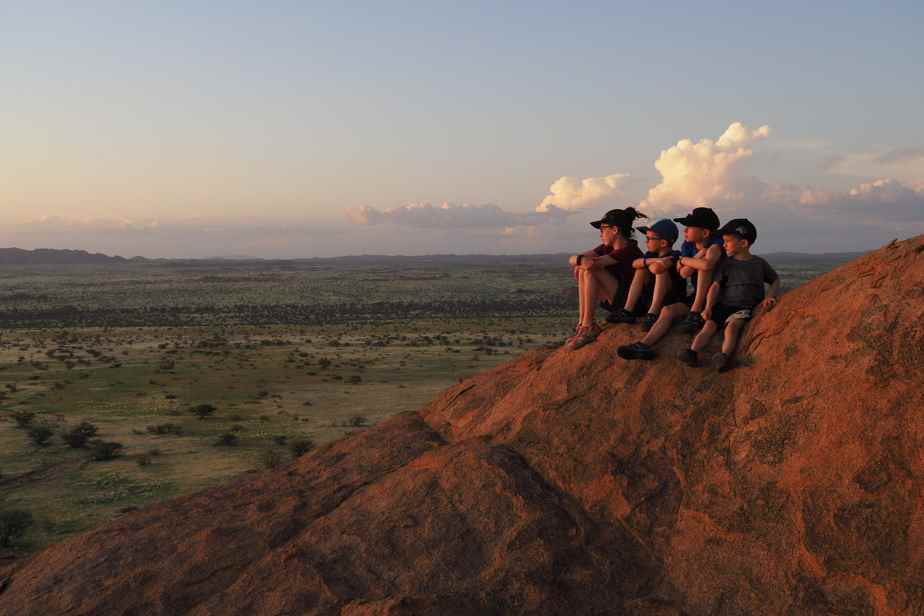In February 2020, The Press told the story of Edith Lemay and Sébastien Pelletier, who were about to introduce their four children to the world, three of whom have a degenerative eye disease. It was only last month that they were able to leave, finally. We joined Edith in Namibia, where the family is embarking on their year-long journey.
Posted at 6:00 p.m.
They were to leave in July 2020 and begin this crazy adventure aboard the Trans-Siberian train, between Saint Petersburg and Mongolia.
Needless to say, plans have changed. Edith and Sébastien had to postpone their trip countless times, depending on the waves of COVID-19 and border closures. The itinerary also had to be reviewed, as Russia is not exactly a destination of choice at the moment.
Never mind, Edith Lemay and Sébastien Pelletier have not abandoned their project, and it was on March 21 that they were able to hoist the sails, with Namibia, in southern Africa, as their first destination. Why, Africa? Because when planning the route for the umpteenth time last winter, Asia was closed to visitors and Latin America was difficult to reach by land borders.

PHOTO PROVIDED BY EDITH LEMAY
The family, the day of departure
dazzling journey
“Sometimes nothing happens for nothing. As hard as it was to push back and push back again, the trip we’re doing right now is just… crazy,” says Edith, whom we reached last week in Windhoek, Namibia’s capital. It was 9:30 p.m. and the children had just gone to bed. Next to Edith, Sébastien was talking to his banker. When the network is good, in Namibia, you have to take advantage of it.
For a little over a month, the Boucherville family has been dazzled by the landscapes and wide open spaces of Namibia. And that’s why it’s there: parents want their children to fill up on the beauty that the world has to offer. Mia, 11, Colin, 6, and Laurent, 4, all have retinitis pigmentosa. This genetic disease, which affects one in 3,500 people, results in a gradual loss of peripheral vision, often from adolescence, to complete blindness in adulthood. Leo, 9 years old, escaped the disease.

PHOTO PROVIDED BY EDITH LEMAY
A natural pool of Spitzkoppe, a rocky heap
So far, things are going wonderfully well with the little tribe.
I expected it to be a little intense to start in Africa, camping, but honestly, it’s going really well, really. It’s even easier to camp here than at home. In the camping pitches, there is running water, a private shower. It’s really cool.
Edith Lemay
The family, who hired a car and camping gear, first set out on a loop through southern Namibia.

PHOTO PROVIDED BY EDITH LEMAY
The ghost town of Kolmanskop
Edith tells us about her visit to the ghost town of Kolmanskop, planted in the middle of the Namib desert. Built at the beginning of the XXand century, Kolmanskop had its heyday in the 1920s, when diamond mining was in full swing in the region. The sand has now regained its rights. “As it’s in the desert, the buildings – luxurious – are super well preserved, says Edith. The walls are all different colors. »
The family also did several desert hikes and sunset walks. She tried the dune board (sandboarding) and saw plenty of animals, from giraffes and penguins to zebras and leopards. Leo, 9 years old, asked if they were real giraffes, he was so surprised to see them appear.

PHOTO PROVIDED BY EDITH LEMAY
Léo, Mia, Colin and Laurent at the top of dune 45, in Namibia
The day before the interview, they even climbed a dune more than 450 m high, in the early morning, to see the sun rise. Once at the top, after a sustained effort, the wind picked up. “We had the wind and the sun in the face. I tried to take pictures, but it shows that it was a pleasant zero moment! “Launches Edith with a burst of laughter.
Recharge the batteries
Between all these adventures, Edith and Sébastien go to school remotely with the three oldest, often in the afternoon, when it’s too hot to do outdoor activities. They find themselves a corner of shade or better, a poolside. Colin, who is in first grade, is learning to read and write.

PHOTO PROVIDED BY EDITH LEMAY
Camp Gecko
You can hear it: Edith is relaxed.
“I’m not normally an anxious person, but the last year, with COVID-19, I found it difficult,” she says. Being outdoors all the time recharges my batteries. »
Edith recounts her journey on her Instagram page, Full Their Eyes. She thus attracted the attention of several media in Canada and elsewhere in the world. The British daily The Guardian and a New Zealand radio station have requested an interview with her. Production companies have even approached her to make a documentary on their journey.

PHOTO PROVIDED BY EDITH LEMAY
The complete family in the Kalahari Desert
Edith, Sébastien, Mia, Léo, Colin and Laurent have just left Namibia to cross Zambia by train to reach Tanzania, where they will stay for five weeks. They then think of going to Turkey and then to Mongolia. Afterwards, they will probably go down to Asia, but nothing is set in stone yet.
If the pandemic has taught them one thing, it’s that you shouldn’t have a fixed plan. And finally, this freedom pleases them a lot. “I prefer to go with the mood of the moment,” says Edith.
Nothing happens for nothing, right?

